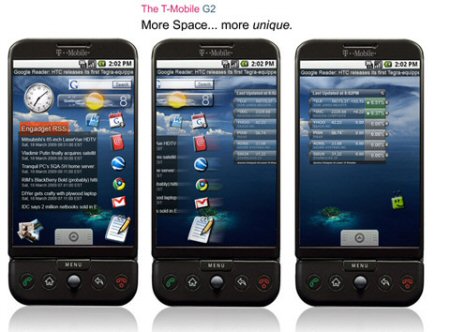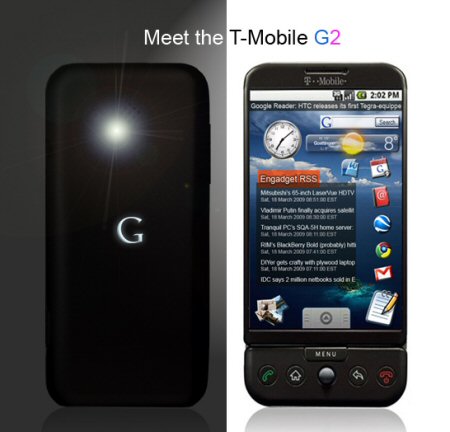T-Mobile has finally sent in the press release email with the release date for the UK and the prices, we are so happy it is unreal. The T-Mobile G1 Android Phone UK release is October 30.
This handset release in the UK just a few days after the U.S release, many thought that the phone was coming in November which would have been ok, but October is much better. The open-source smartphone will be available from Free on a £40 monthly contract in white and black, no chance of the brown one yet.
Below is the full press release of the T-Mobile G1 Android Phone release, you will see all the details including specs, enjoy and please do tell us how happy you are.
PRESS RELEASE
London, 15 October: T-Mobile today announces the hotly anticipated T-Mobile G1 " the phone built for the internet and the first to run on the innovative Android open source mobile software platform - will be available in the UK from 30 October.
Exclusive to T-Mobile, the G1 offers a completely new mobile internet experience with full touch screen functionality plus a QWERTY keyboard for easy online communication, high speed internet with popular Google services already on board, and access to innovative application downloads from the new Android Market.
Since unveiling the device in New York in September, over 25,000 UK consumers pre-registered their interest in the device. The wait will be over on 30 October as the T-Mobile G1 hits the shelves at T-Mobile stores just five weeks after it's official unveiling.
The G1 is available for free on T-Mobile Combi and Flext price plans from £40 a month, including unlimited fast mobile internet browsing powered by T-Mobile's award-winning network. Combi 35 offers 800 minutes and unlimited texts while Flext 40 gives up to 1,250 minutes or up to 2,500 texts or any mix of the two.
Jim Hyde, Managing Director T-Mobile UK said: With so much excitement generated by the announcement last month, we're thrilled to bring the T-Mobile G1 to the UK in time for Christmas. It's set to revolutionise the way we use the internet on our mobiles: it's uniquely built for effortless online communication - whether you want to email, text or blog - and with access to some groundbreaking applications on Android market, the possibilities really are endless.
The T-Mobile G1 will feature a range of exciting applications pre-loaded at launch and with a couple of short clicks to Android Market, customers can find and download innovative applications from games and navigation tools to on-the-go shopping comparisons.
The G1's full QWERTY keyboard makes it simple to write exactly what you want to say and navigating is even easier using the touch screen and trackball. There's also one touch access to all your favourite Google applications including web search, Google Maps, Google Talk and Google Mail. So whether it's email, instant messaging, social network updates or even calling and texting, the T-Mobile G1 is perfect for whatever form of communication you prefer.
With Google Maps, T-Mobile G1 users can instantly view maps, satellite imagery, find local business and get driving directions. And Google Maps synchs with the built-in compass " an industry first " to allow users to view locations and navigate 360 degrees by simply moving the phone with their hand.
Vital statistics: The T-Mobile G1
• Available in two colours " black and white
• GPS and compass
• Rich HTML email client which seamlessly synchs email with POP3 or IMAP services
• 3.5G (HSDPA/HSUPA) and Wi-Fi connectivity
• 3 Mega pixel camera
• MP3 music player
• Pre-installed 2 GB Micro SD memory card (device supports up to an 8 GB card)
• Bluetooth-enabled
• Up to 130 hours standby and up to 5 hours talk time
• Dimensions: 117.7 x 55.7 x 26.5 mm
• Weight: 158g











